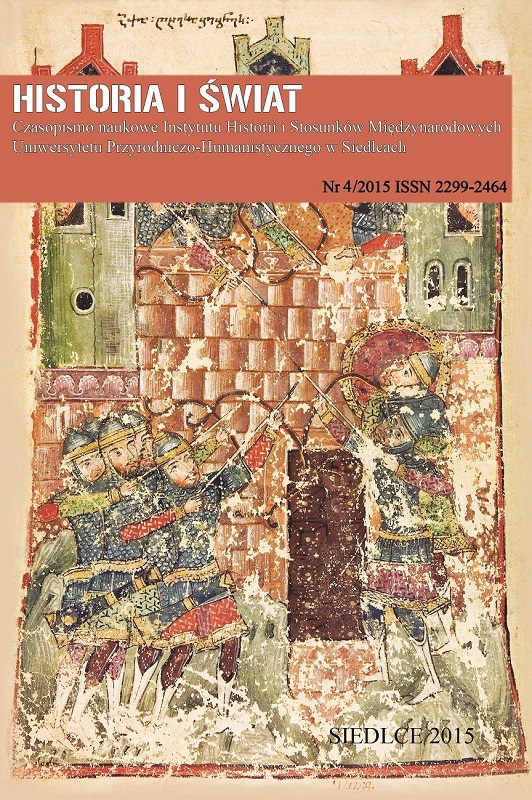Иранские шлемы «кула-худ» в комплексе защитного вооружения тюркских кочевников Центральной Азии XVII–XIX вв = Iranskiye shlemy «kula-khud» v komplekse zashchitnogo vooruzheniya tyurkskikh kochevnikov Tsentral'noy Azii XVII–XIX vv
DOI:
https://doi.org/10.34739/his.2015.04.11Słowa kluczowe:
Iranian helmets, equipment, Turkic nomads, Central AsiaAbstrakt
The article considers the topic of the evolution of Iranian „kula-hud” helmets, their construction and decorations system in the perspective of their employment by Turkic nomads of Central Asia. Basing on thorough analyze of the sources it was proved that the „kula-hud” helmet type was created on the foundation of the helmets manufactured from one-piece of metal from Near East in high Middle Ages. „Kula-hud” were originally formed by adding a moveable nasal, two sockets at the temples and a sharp spike at the top of hemispherical body. Chain mail aventail was also added. Early variants of the helmets of this type (proto-kula-hud) can be found as early as 16th century and should be linked with the reform of Iranian protective armament by the first Safavids. In 17th century „kula-hud” helmets were spread widely not only in Iran and India but also in Turkic states of Central Asia. An important factor in popularization of „kula-hud” was its relation with other weaponry (archery, sabers) and the tactics of the peoples of the area. The analyze of „kula-hud” helmets from Central Asia allowed to state that the majority of them are the imports from Iran. Part of the helmets was manufactured by the local masters according to Iranian patterns. The modification of some traditional riveted segmented helmets proves high prestige of Iranian armament among Turkic nomads of the area.
Pobrania
Pobrania
Opublikowane
Numer
Dział
Licencja
Prawa autorskie (c) 2015 Historia i Świat

Utwór dostępny jest na licencji Creative Commons Uznanie autorstwa – Bez utworów zależnych 4.0 Międzynarodowe.




